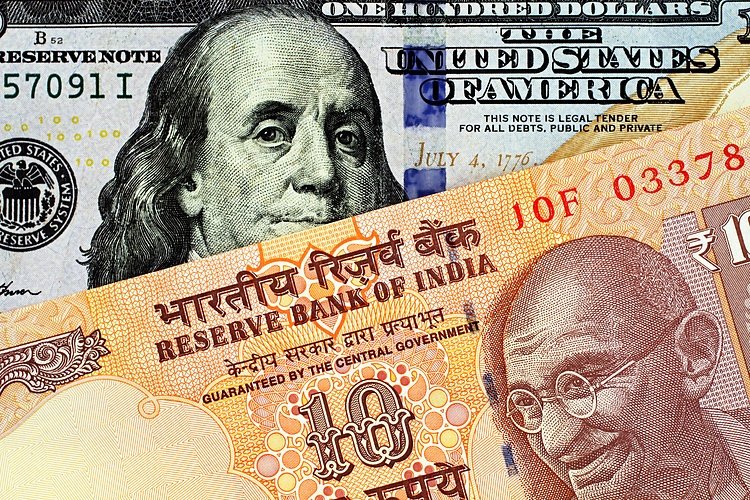- The US Dollar Index trades weaker to around 102.70 in Thursday’s early European session.
- Fears of a US recession drag the US Dollar lower.
- Fed officials cautious as they warn of persistent inflation, FOMC Minutes showed.
The US Dollar Index (DXY), an index of the value of the US Dollar (USD) measured against a basket of six world currencies, trades in negative territory for the third consecutive day near 102.70, down 0.28% on the day. Investors will keep an eye on the US March Consumer Price Index (CPI) inflation and weekly Initial Jobless Claims reports, which are due later on Thursday.
The Greenback edges lower after US President Donald Trump ramped up his trade war against China while temporarily pausing tariffs on many other countries for 90 days. “It seems likely that the U.S. President blinked (when) confronted with a potential recession, a political backlash, a near equity bear market, and the early warning signs of a financial crisis,” said Kyle Rodda, an analyst at capital.com. “There’s now less confidence in the U.S. government amongst investors,” he said.
The US Federal Reserve (Fed) officials acknowledged that inflation could prove to be more persistent than expected as there is a high degree of uncertainty surrounding Trump’s tariffs, according to minutes from their March meeting. This uncertainty has also raised concerns about a potential economic downturn in the US. Minneapolis Fed President Neel Kashkari warned late Wednesday that continued economic uncertainty could push the US economy into a downturn.
Additionally, Cleveland Fed President Beth Hammack takes a cautious stance on interest rate forecasts, saying that uncertainty wrapped up in US trade policy will continue to make it difficult for the central bank to engage in market-smoothing operations
Traders have raised their rate-cut estimates in recent weeks. According to the CME FedWatch tool, derivatives markets now imply a 44% possibility that the Fed will cut rates at its next meeting on May 6-7, up from 14% a week ago.
US Dollar FAQs
The US Dollar (USD) is the official currency of the United States of America, and the ‘de facto’ currency of a significant number of other countries where it is found in circulation alongside local notes. It is the most heavily traded currency in the world, accounting for over 88% of all global foreign exchange turnover, or an average of $6.6 trillion in transactions per day, according to data from 2022.
Following the second world war, the USD took over from the British Pound as the world’s reserve currency. For most of its history, the US Dollar was backed by Gold, until the Bretton Woods Agreement in 1971 when the Gold Standard went away.
The most important single factor impacting on the value of the US Dollar is monetary policy, which is shaped by the Federal Reserve (Fed). The Fed has two mandates: to achieve price stability (control inflation) and foster full employment. Its primary tool to achieve these two goals is by adjusting interest rates.
When prices are rising too quickly and inflation is above the Fed’s 2% target, the Fed will raise rates, which helps the USD value. When inflation falls below 2% or the Unemployment Rate is too high, the Fed may lower interest rates, which weighs on the Greenback.
In extreme situations, the Federal Reserve can also print more Dollars and enact quantitative easing (QE). QE is the process by which the Fed substantially increases the flow of credit in a stuck financial system.
It is a non-standard policy measure used when credit has dried up because banks will not lend to each other (out of the fear of counterparty default). It is a last resort when simply lowering interest rates is unlikely to achieve the necessary result. It was the Fed’s weapon of choice to combat the credit crunch that occurred during the Great Financial Crisis in 2008. It involves the Fed printing more Dollars and using them to buy US government bonds predominantly from financial institutions. QE usually leads to a weaker US Dollar.
Quantitative tightening (QT) is the reverse process whereby the Federal Reserve stops buying bonds from financial institutions and does not reinvest the principal from the bonds it holds maturing in new purchases. It is usually positive for the US Dollar.






